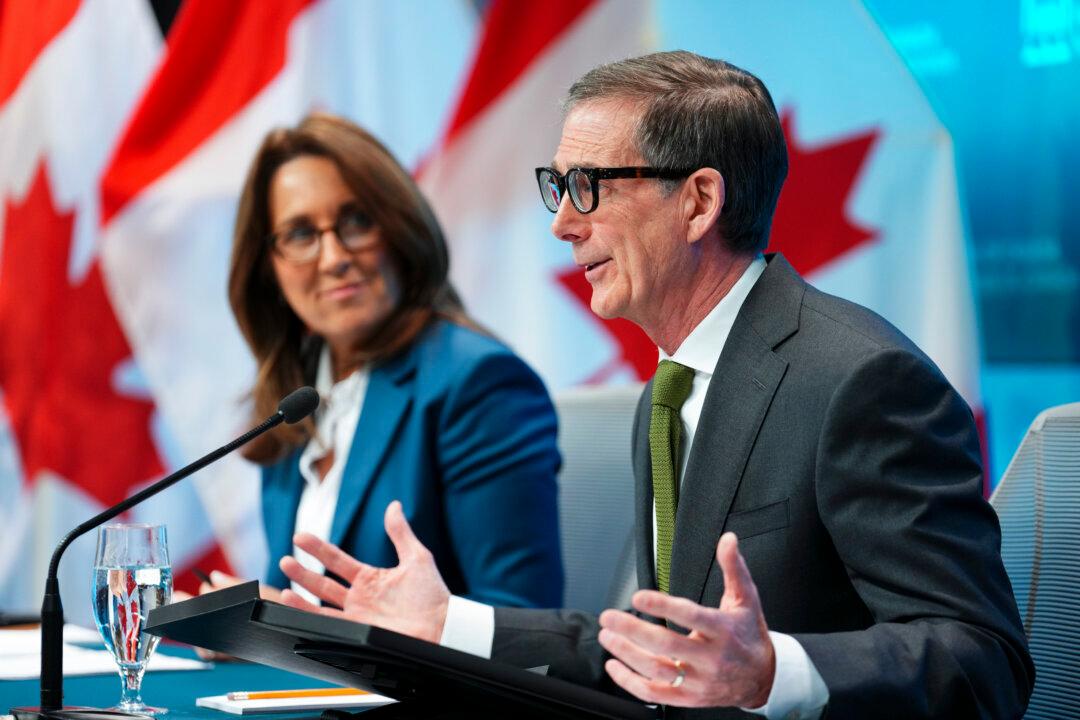News Analysis
The federal government may soon be called upon to provide even more support to households and businesses as the threat of further lockdowns grows to curtail the COVID-19 spread and ease the burden on hospitals. By some metrics, Ottawa has already done more than all its peers, though analysts suggest the support has been inefficient and needs to be more targeted going forward.
During the first wave of the pandemic, the feds proved to be bountiful in their support of households as they got money out the door as quickly as they could. But now, given how certain business sectors are suffering, calls are coming for more specific aid that would address acute problems, look to rebuild the economy’s productive capacity, and avoid wasteful spending and more long-term fiscal damage.
“This extreme generosity of the government—provided across the board, support to the household sector—contrasts markedly with its approach to the business sector, which is very tight-fisted, very suspicious, in very limited support,” Philip Cross, former chief economic analyst at Statistics Canada and Macdonald-Laurier Institute senior fellow, told The Epoch Times.
“So I think there’s a major imbalance there, which I think might be politically popular but is not good for our economy at all.”
Ottawa has generally avoided large-scale industry-specific financial support.
Cross said Ottawa should have understood that certain industries would be acutely affected by the pandemic, such as airlines, accommodation, and food services, while other industries are more able to adapt.
“We started to figure this out pretty quickly, but yet we continue to provide across-the-board relief—income relief,” he said.
‘Quality Over Quantity’
Trevin Stratton, chief economist at the Canadian Chamber of Commerce, also said targeted support for the most severely affected businesses and individuals should be the principle behind a second wave of federal aid.
“Let’s make sure federal spending is focused on quality over quantity,” he said in a Nov. 13 statement, adding that the return on investment must be looked at carefully with an eye on economic growth.
The International Monetary Fund (IMF) estimates that Canada’s budget deficit as a percent of the gross domestic product (GDP), at 19.9 percent, will be the largest among 35 high-income countries in 2020. The feds last estimated that deficit to be $343.2 billion when they delivered their fiscal update in July.
The Bank of Canada’s balance sheet has swelled significantly since it started funding the government’s borrowing to pay for various pandemic relief measures. Here too, Canada has done more than the United States.
From March 1 to Nov. 4, the BoC’s books have grown by about 20.4 percent as a percentage of GDP, to $526 billion. In contrast, from March 1 to Nov. 11, the U.S. Federal Reserve’s balance sheet has grown by just around 13.7 percent as a percentage of GDP, to US$7,224 billion, according to tabulations from TD Securities.
From another perspective, the Organisation for Economic Co-operation and Development (OECD) just reported that while most countries saw drops in household disposable income and economic growth in the second quarter, Canada and the United States saw household income per capita rise by 11.0 percent and 10.1 percent respectively.
But Canada’s rise is clearly the outlier among the OECD’s seven major nations. The U.S. increase is deemed less noteworthy since its Bureau of Economic Analysis has already reported a 4.4 percent decline in real disposable personal income for the third quarter.





